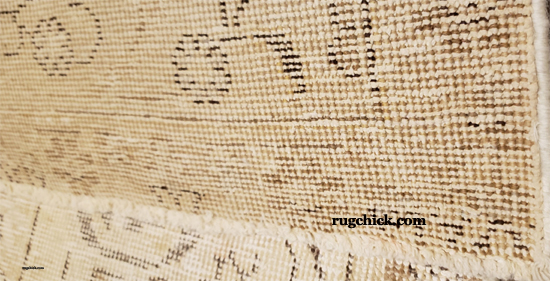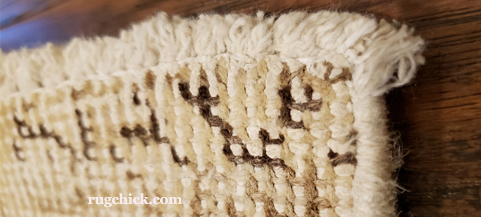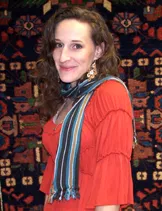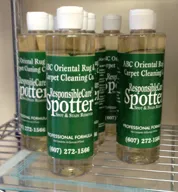AGGRESSIVE RUG AGING
Aggressive rug aging is one of the latest techniques used to make brand new rugs look like old or 'antique rugs.' Unfortunately, the process is aggressive to the extreme, even to the point of actually leaving the rugs threadbare!
These types of rugs are often called ‘distressed rugs.’ But the only ones who will be distressed are the homeowners, when their brand new rug falls apart in a short period of time!
PAST TREATMENTS TO AGE RUGS
In the past few decades the process for making rugs look older was to give them either a ‘luster wash’ to fade the colors, or a ‘tea wash’ to cover the rug in a dark tone to mute the colors.
Those past treatments usually kept the wool pile in place. They could be compared to getting just highlights of color applied to hair to make it look sun-kissed and shiny, but without changing the length.
The current trend of rug aging is MUCH more aggressive. Instead of ‘highlighting,’ it is more like aggressively bleaching and shaving a head of hair with a razor blade to leave bleached, jagged roots!
WHY IS A MORE AGGRESSIVE TREATMENT BEING USED?
Rug dealers understandably follow what consumers appear to want in order to sell their rugs. People seeking rugs for their home spaces currently like the faded, soft look that can be attained with these aggressive treatments.
Unfortunately, the homeowner would also expect a soft wool texture. But because of the strong chemicals used with this aggressive rug aging process, the rug will not only have a harsh texture but a very strong chemical odor as well, one that may actually make the homeowner fall ill!
Rug dealers charge thousands of dollars for these trendy, chemically filled rugs. They may tell the homeowner the rug is safe to put in a child’s room and to just air it out--but is it?
The image below shows the back of this rug. You can see how much of the wool has been eaten away. The rug was sold as a ‘new wool rug.’ But where is the wool?
From this view you see a lot of cotton warps and wefts (those grid-like lines of white). The wool that remains on this rug is peeking through here and there, but the rug is essentially the cotton foundation with few actual wool 'knots' remaining. You can see the faint darker tone which is a hint of what these original colors were.
To create this condition in a new rug requires some EXTREMELY strong chemicals to bleach and eat away the wool. The rug is shaved very short and then the rug is soaked in a chemical vat with the sole purpose of deteriorating and dissolving the wool fibers and dyes.
Here is a closer look at the back of the rug:
WHAT DOES THIS AGGRESSIVE RUG AGING MEAN FOR RUG BUYERS?
A person who purchases this type of rug generally likes to have wool rugs in
the home because they are durable and hide dirt really well. They are also expected
to last for decades with proper care. But buyer beware! This type of rug is now
more of a cotton rug than a wool rug and it is 'damaged goods.'
There are some very important things to consider:
The Aggressive Chemical Process Damages the Rug
When a rug has been heavily bleached front and back with this aggressive rug aging process, it has been soaked in a chemical vat for a long time. The rug is essentially ruined when it is damaged to this level.
The Fringe Fibers Are Also Ruined
This process will also leave the fringe tassels fluffy white and frayed. They are no longer twisted as they should be. If we just grab the fringes, the threads will easily pull away.
The Chemicals Will Have Also Ruined the Cotton Foundation
All the absorbent interior cotton fibers of the foundation have fully absorbed those chemicals. If the fringes can be easily pulled away with your fingers, this means the same chemicals have also damaged the cotton throughout the rug. This is because each of those cotton fringe tassels runs all the way through the middle of hand knotted rugs to the opposite side. If the new rug has damaged fringes, it should signify to the buyer that the interior cotton is also damaged.
Chemicals from the Rug Will be Released into the Home
Those same chemicals used for aggressive rug aging will travel to the home. If the chemicals can ruin a durable wool fiber, what else are they capable of ruining in the home?
Spills and Stains Will be a Major Problem
Spills and stains will be a
major problem with these aggressively treated rugs. Since the wool has been damaged and most of it removed, spills
will soak immediately into the cotton foundation. Cotton does not suspend spills, it soaks them up.
A Nightmare for Rug Cleaners
Even rug cleaners will have a difficult time reaching spills and improving the appearance of rugs damaged by aggressive rug aging. Heavy soiling in traffic areas can cause cotton to become stained and discolored, and even a cleaner’s best efforts may result in shadowing and discoloration or graying that cannot be improved.
Fabric Protector Application?
Applying a fiber protector can help create more of a barrier. But the protector is not going to help with the inevitable process of this rug continuing to fray and deteriorate under regular use. Friction is going to cause breaks in the fibers over time.
Please note: Certain information in this article was used with permission from rugchick.com.
ABC CAN HELP
Most consumers will not understand what they are looking at when they see a 'distressed' rug. They will only see the faded look they were seeking. Most will not know what that rug looked like BEFORE the damage done to it. But at ABC, we do know! We know what aggressive rug aging in a heavy traffic area will do and just how difficult it may be to get it looking good again.
We will thoroughly inspect your rug and let you know the results so you can make an informed decision on what to do. The plain fact may be that your ‘new’ rug may have been chemically ruined in order to create a ‘look’ that will sell. It is quite possible your rug has been ruined to the point where it cannot be cleaned satisfactorily.
We are here for you. Our normal hours are 8 to 5 Monday through Thursday, closing at 4:30 on Fridays, and from 10 to 1 on Saturdays. However, because of the current COVID pandemic, our hours may vary. We have instituted all the necessary procedures to keep you and our employees safe during these difficult times.
Please call or text our office at 607-272-1566 with any questions or concerns, to schedule an appointment for cleaning your home or business, and before you bring any items to our plant.
"The Cleanest Clean You've Ever Seen."
by
ABC Oriental Rug & Carpet Cleaning Co.
130 Cecil Malone Drive Ithaca, NY 14850
607-272-1566
ABC
Carpet & Rug
Spotting Guide
Learn how to remove spots with ordinary household solutions
Sign up below to gain access to your complementary Spotting Guide from ABC.
Registering your email address guarantees you will be notified whenever discount savings coupons become available.
Did you know that our ABC Responsible Care Spotter can get those pesky spots out of your carpet and rugs and will work equally as well on your clothes and upholstery?
Stop by our office and pick one up. They are $5.00 + Tax but if you have carpets or upholstery cleaned in your home or business, just request a free one from your Technician.
And don't forget to fill out the form above to download your free ABC Spotting Guide!

ABC
Carpet & Rug
Spotting Guide
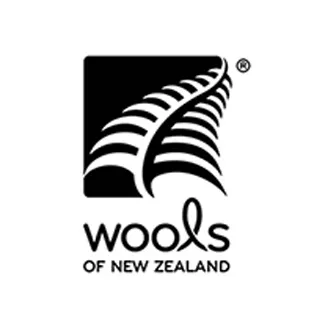
The Standard of Excellence

